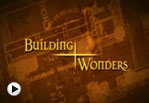Investigating Images
Support materials
- Viewfinder (fold a square of paper/thin card and cut out a square from the middle)
- Magnifiers
- Plain paper
- Thin card
- Digital camera
- Camcorder
- Selection of images
- Contemporary and Historical Ordnance Survey (OS) maps (Alan Godfrey Maps produce large scale plans of OS maps for towns throughout the UK and Ireland)
Questions to ask
- Discuss why an image was made.
- Describe what the image shows.
- Discuss whether the image is a reliable source of evidence.
- Describe the sounds and smells that the image evokes.
- If studying a black and white image discuss the colours that would have been present in the real scene.
- Why was the image taken/ made? Does it provide a record of an event or location? What other reason could there be for creating it?
- What information can an image tell us about an area in the past e.g. work, transport, cargo, buildings, land use, etc.
Take a series of images of the same location and put them in chronological order. Consider what criteria you have used and why?
Compare and contrast images of different areas of Bristol or elsewhere during the same historical period. What does this tell you?
Discuss the reliability of images as a historical source and what this can tell us about the importance of using more than one source of evidence.
Take into account: who made the image, who they were working for, motives, political climate, national and international events e.g. creation of the Floating Harbour, relocation of the City Docks to Avonmouth, World War II, and so on.
Compare the information in the image to another historical source of information about the same event or location. What are the differences and what are the similarities?






